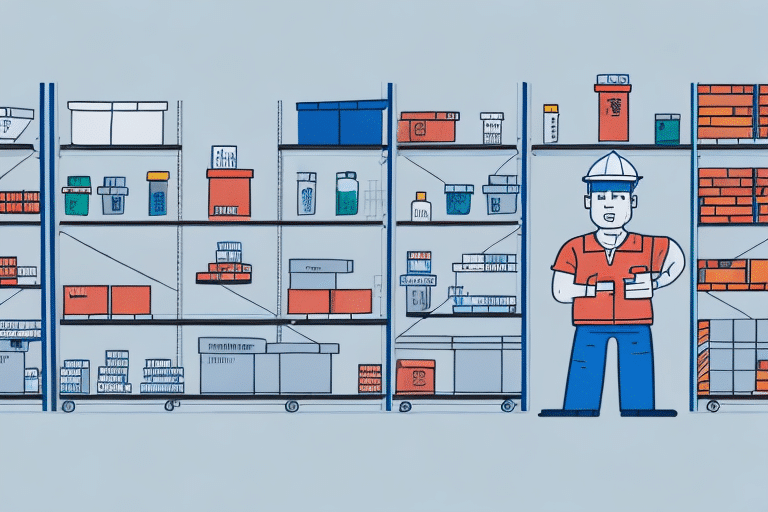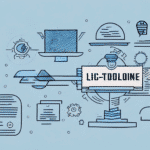What is Fill Rate and Why is it Important for E-Commerce Businesses?
Fill rate refers to the percentage of customer orders that are shipped complete and on time, without any backorders or substitutions. It measures how effectively a business fulfills customer orders according to their original specifications.
For e-commerce businesses, where orders are placed online and customers expect fast and reliable shipping, fill rate is a critical determinant of the overall customer experience. According to a Harvard Business Review report, improving customer retention rates by 5% can increase profits by 25% to 95%. A high fill rate significantly contributes to customer satisfaction and loyalty.
One effective way to improve fill rate is by implementing robust inventory management systems that accurately track stock levels and notify staff when items are running low. This proactive approach helps prevent backorders and substitutions, which can negatively impact fill rate and customer satisfaction.
Additionally, optimizing the speed and efficiency of the shipping process is crucial. Partnering with reliable shipping carriers and enhancing packaging and handling procedures ensure orders are delivered on time and in excellent condition.
Understanding the Different Types of Orders in E-Commerce
Effectively measuring fill rate requires a clear understanding of the various types of orders e-commerce businesses handle. These include:
- Pre-orders: Customers place orders in advance of a product's official release date.
- Backorders: Customers order products that are currently out of stock, awaiting restock.
- In-stock Orders: Customers order products available for immediate shipment.
- Drop-shipping Orders: Businesses rely on third-party suppliers to fulfill orders directly to customers.
Each order type presents unique challenges. Pre-orders require meticulous planning and clear communication with customers to ensure timely deliveries. Backorders demand effective inventory forecasting to minimize delays and customer frustration. Drop-shipping offers the advantage of expanding product offerings without holding inventory but necessitates reliable suppliers and robust communication channels to ensure orders are fulfilled accurately and promptly.
The Impact of Fill Rate on Customer Satisfaction and Loyalty
Fill rate plays a pivotal role in determining customer satisfaction and loyalty. A high fill rate signifies that a business consistently meets customer expectations, fostering trust and encouraging repeat business. Conversely, a low fill rate can lead to frustrated customers, negative reviews, and lost sales.
Research by Shopify indicates that 86% of buyers are willing to pay more for a better customer experience. Ensuring a high fill rate directly contributes to a positive customer experience, enhancing overall satisfaction and loyalty.
Beyond customer satisfaction, fill rate also has financial implications. A low fill rate can lead to increased costs due to the need for additional shipments and handling, as well as potential penalties for failing to meet delivery deadlines. In contrast, a high fill rate can result in cost savings and increased revenue through repeat business and positive word-of-mouth recommendations.
How to Calculate Fill Rate for Your E-Commerce Business
Calculating fill rate involves a straightforward formula:
Fill Rate (%) = (Number of Orders Shipped Complete and On Time / Total Number of Orders) × 100
For example, if your business received 1,000 orders in a month and successfully shipped 950 of them complete and on time, the fill rate would be 95%.
To gain deeper insights, businesses can break down fill rate by order type. For instance, if in-stock orders have a high fill rate but backorders lag, it may indicate issues with inventory forecasting that need to be addressed.
It's also essential to factor in returns and cancellations when calculating fill rate. A high rate of returns or cancellations can negatively impact the overall fill rate, so tracking these metrics separately provides a more accurate picture of fulfillment performance.
Implementing automated inventory management systems and predictive analytics tools can aid in accurate forecasting and timely restocking, thereby improving fill rates.
Factors That Affect Fill Rate in E-Commerce Operations
Several factors can influence fill rate in e-commerce operations:
- Inventory Management: Maintaining accurate inventory levels and avoiding stockouts are critical for ensuring high fill rates.
- Order Processing and Fulfillment: Streamlining these operations reduces errors and delays that can impact fill rate.
- Supplier Relationships: Strong relationships with suppliers ensure timely and complete deliveries, especially for drop-shipping orders.
- Technology: Utilizing inventory management systems and order fulfillment software automates and optimizes operations for higher fill rates.
- Shipping and Logistics: Choosing the right shipping carriers and optimizing shipping routes ensure timely and efficient deliveries.
- Customer Service: Clear and timely communication with customers regarding their orders helps manage expectations and prevent cancellations or returns.
Addressing these factors holistically can lead to significant improvements in fill rate and overall operational efficiency.
Best Practices for Improving Fill Rate in Your E-Commerce Supply Chain
To enhance fill rate in your e-commerce supply chain, consider implementing the following best practices:
- Invest in Inventory Management Tools: Accurate tracking and forecasting of inventory levels help reduce stockouts and improve fill rates.
- Optimize Order Processing and Fulfillment: Streamlining these processes minimizes errors and delays that can negatively impact fill rate.
- Strengthen Supplier Relationships: Building strong partnerships with suppliers ensures timely and complete deliveries, especially for drop-shipping orders.
- Leverage Technology: Adopting inventory management systems and order fulfillment software automates and optimizes operations for higher fill rates.
- Regularly Analyze Shipping and Delivery Processes: Evaluate carrier performance, select efficient shipping methods, and monitor delivery times to ensure timely and accurate deliveries.
- Enhance Customer Communication: Provide clear and timely updates on order status, including any delays or issues, to manage customer expectations effectively.
By systematically applying these best practices, e-commerce businesses can significantly improve their fill rates, leading to enhanced customer satisfaction and increased profitability.
How to Use Fill Rate Data to Optimize Inventory Management and Order Fulfillment Processes
Tracking fill rate provides valuable insights into inventory management and order fulfillment. Here's how to leverage fill rate data effectively:
- Identify Trends and Areas for Improvement: Analyze fill rate by product category to identify which areas consistently underperform and require attention.
- Set Fill Rate Targets: Establish specific fill rate goals for different product categories or order types to ensure consistent performance.
- Evaluate Supplier Performance: Track fill rates associated with different suppliers to identify reliable partners and renegotiate terms with underperforming ones.
- Optimize Inventory Levels: Use fill rate data to adjust inventory levels, ensuring that high-demand products are adequately stocked to meet customer needs.
- Improve Forecasting Accuracy: Incorporate fill rate insights into demand forecasting models to enhance accuracy and reduce the likelihood of stockouts.
By systematically analyzing fill rate data, businesses can make informed decisions that enhance inventory management and streamline order fulfillment processes, ultimately leading to improved operational efficiency and customer satisfaction.
The Role of Technology in Measuring and Improving Fill Rate in E-Commerce
Technology plays a pivotal role in both measuring and improving fill rate in e-commerce operations. Key technological tools and solutions include:
- Inventory Management Systems: These systems provide real-time visibility into stock levels, automate reordering processes, and help prevent stockouts.
- Order Fulfillment Software: Automates the order processing workflow, reduces errors, and accelerates the fulfillment process.
- Data Analytics and Machine Learning: Analyzes vast amounts of data to identify trends, forecast demand, and optimize inventory levels.
- Automated Communication Tools: Keeps customers informed about their order status, thereby enhancing transparency and trust.
Integrating these technologies enables e-commerce businesses to operate more efficiently, accurately track fill rates, and implement data-driven strategies to enhance order fulfillment.
Furthermore, leveraging technologies like artificial intelligence and machine learning algorithms can provide predictive insights that preemptively address potential fulfillment issues before they impact the fill rate.
Case Studies: Successful E-Commerce Businesses That Prioritize Fill Rate
Numerous successful e-commerce businesses have prioritized fill rate in their operations, reaping the benefits of increased customer satisfaction and loyalty. Notable examples include:
- Amazon: The e-commerce giant boasts a fill rate of over 99%, achieved through its advanced inventory management systems and extensive network of fulfillment centers.
- Zappos: Known for its exceptional customer service, Zappos maintains a fill rate of over 95% by prioritizing fast and reliable shipping.
- Warby Parker: This online eyewear retailer ensures high fill rates by regularly auditing inventory levels and maintaining strong relationships with suppliers to guarantee timely shipments.
- Chewy: Specializing in pet products, Chewy maintains a fill rate of over 97% and offers free 1-2 day shipping on orders over $49, fostering a loyal customer base.
These businesses exemplify how prioritizing fill rate through strategic inventory management, reliable shipping partnerships, and customer-centric policies can lead to sustained success in the competitive e-commerce landscape.
Conclusion
Measuring fill rate is an essential component of the e-commerce order fulfillment process, enabling businesses to monitor and optimize their supply chain operations for maximum efficiency and customer satisfaction. By understanding the various factors that impact fill rate and implementing best practices alongside advanced technology solutions, e-commerce businesses can significantly enhance their fill rates over time. This not only leads to increased customer loyalty and repeat business but also contributes to overall profitability and competitive advantage in the dynamic e-commerce market.




















